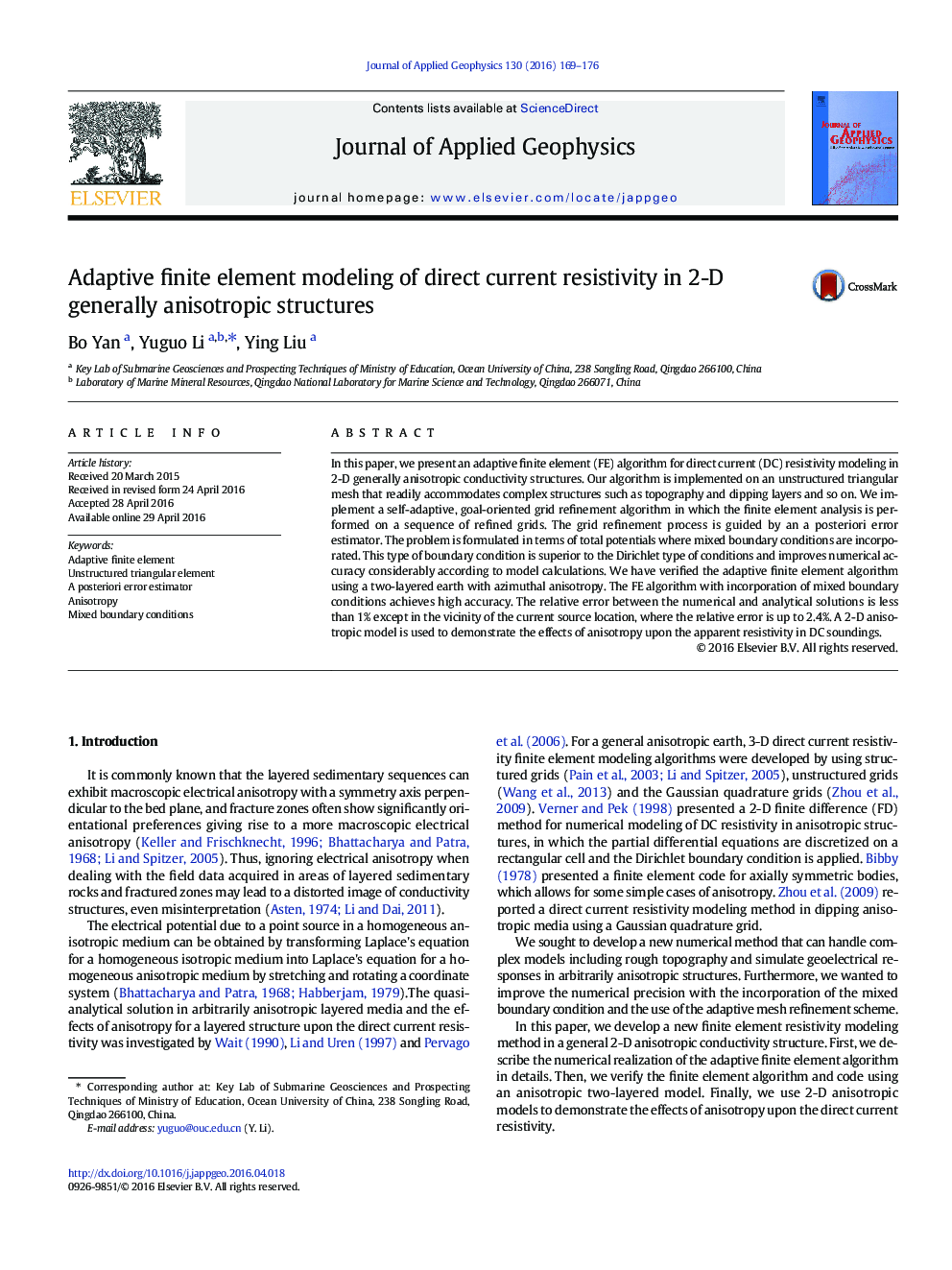| Article ID | Journal | Published Year | Pages | File Type |
|---|---|---|---|---|
| 6446969 | Journal of Applied Geophysics | 2016 | 8 Pages |
Abstract
In this paper, we present an adaptive finite element (FE) algorithm for direct current (DC) resistivity modeling in 2-D generally anisotropic conductivity structures. Our algorithm is implemented on an unstructured triangular mesh that readily accommodates complex structures such as topography and dipping layers and so on. We implement a self-adaptive, goal-oriented grid refinement algorithm in which the finite element analysis is performed on a sequence of refined grids. The grid refinement process is guided by an a posteriori error estimator. The problem is formulated in terms of total potentials where mixed boundary conditions are incorporated. This type of boundary condition is superior to the Dirichlet type of conditions and improves numerical accuracy considerably according to model calculations. We have verified the adaptive finite element algorithm using a two-layered earth with azimuthal anisotropy. The FE algorithm with incorporation of mixed boundary conditions achieves high accuracy. The relative error between the numerical and analytical solutions is less than 1% except in the vicinity of the current source location, where the relative error is up to 2.4%. A 2-D anisotropic model is used to demonstrate the effects of anisotropy upon the apparent resistivity in DC soundings.
Related Topics
Physical Sciences and Engineering
Earth and Planetary Sciences
Geophysics
Authors
Bo Yan, Yuguo Li, Ying Liu,
